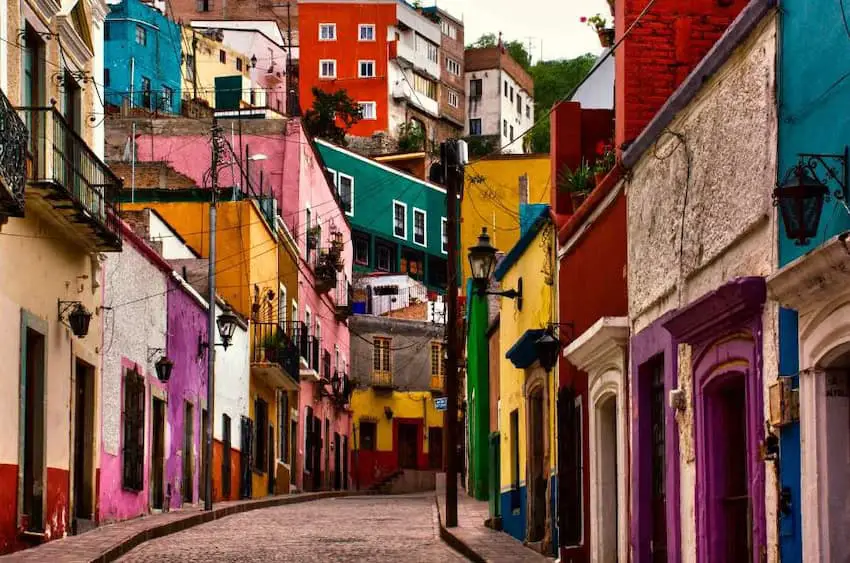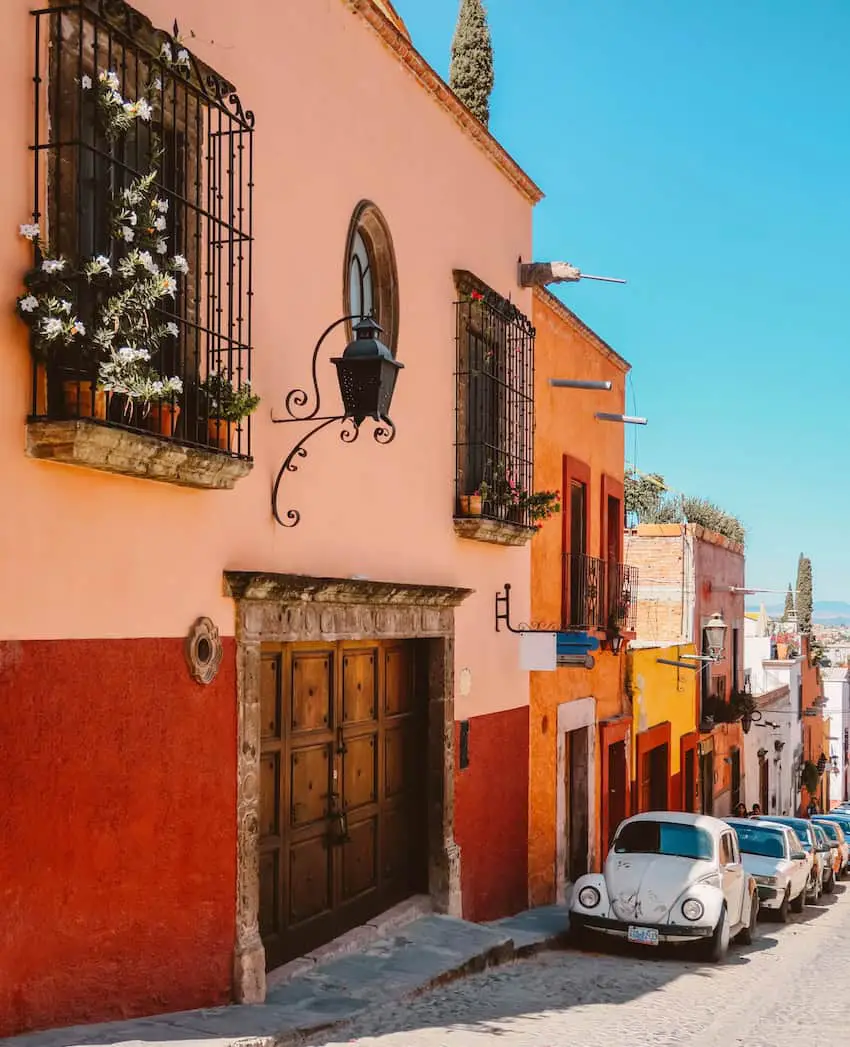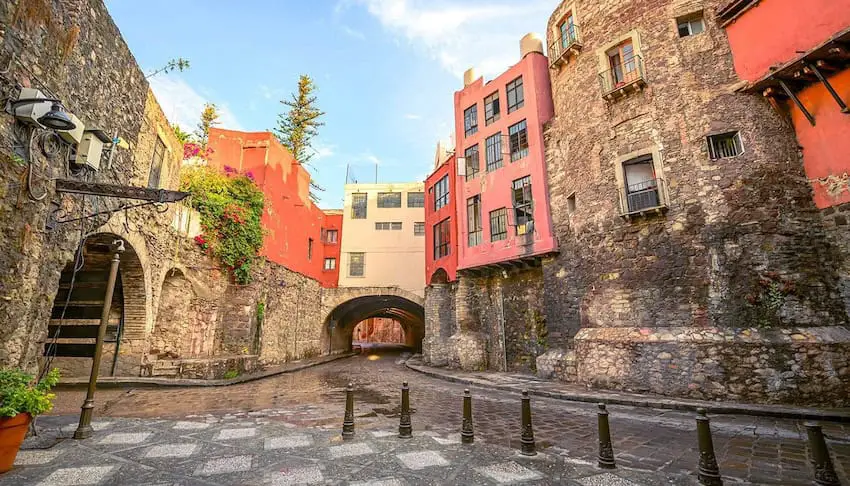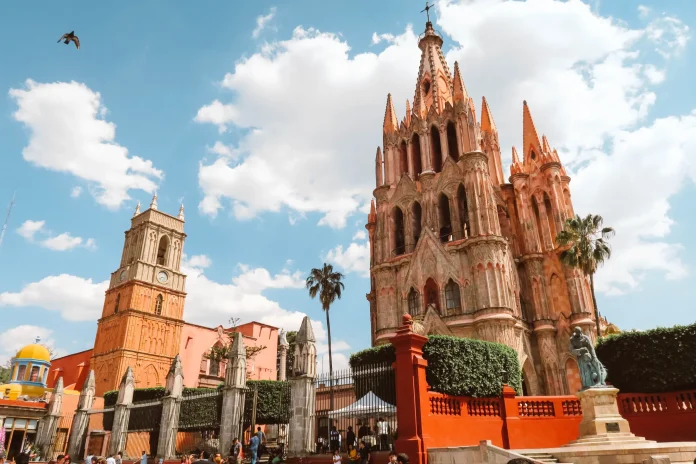Last week’s essay drew inspiration from a bygone era when the Pacific’s Mexican Riviera dominated the tourism landscape. This week we turn to the Mexican heartland, and a state that’s captured the attention of global travelers competing for selfies and a heady dose of “real Mexico.” Guanajuato has two UNESCO World Heritage cities and a third “route” (the Camino Real) that’s also on this coveted list. San Miguel de Allende has even earned a “Best City in the World” ranking a remarkable five times, 2014, 2017, 2018, 2021 and 2024! That’s an astonishing feat, especially since some Mexican and even foreign residents accept these accolades with a “Really?” blush of incredulity. But even without these international recognitions, the State has earned its 21st-century overseas living cred based on some simple, undeniable attributes: location, authenticity and sophistication.
Guanajuato was one of the first areas of Mexico colonized by the Spanish. In the mid-16th century, the state’s rich silver deposits lured the Spanish crown to develop settlements that grew into centers of wealth and influence. In fact, for some two and a half centuries, nearly one-third of the world’s silver came from the mines of one city — Guanajuato. This fertile region was also Mexico’s “breadbasket” — its farms, orchards and ranches feeding the emerging New World cities. The mining wealth enabled the economic and social emergence of Europe in the 17th and 18th centuries, helping fuel the Renaissance.

It has an average altitude of 2,015 meters (6,611 ft) above sea level. Guanajuato has a pleasant, high desert, spring-like climate, with temperatures from 11 to 26 degrees Celcius (52 to 80 Fahrenheit). Winter evenings can be cold, while the summer rainy season lasts from June to September — though with the uncertainty wrought by Mexico’s changing climate, this is becoming less certain with every passing year. It’s greener in the south, where vineyards are common. Before the Spanish arrived, this area was covered in dense forest, but mining needed wood fuel and sheep grazing pastures. Today, the central area is home to most of the state’s agriculture and industry since the terrain allows for highways and large farms, which produce grains, vegetables and fruit. This farmland is considered some of Mexico’s most productive.
Guanajuato State is perhaps Mexico’s grandest colonial-era showcase. It is located in the center of Mexico, in a region referred to since colonial days as El Bajio, meaning the lowlands. Guanajuato is bounded on the north by the State of San Luis Potosí, on the east by the State of Querétaro, on the south by the State of Michoacán, and on the west by the State of Jalisco. It has an area of 30,491 square kilometers (about 11,800 square miles; the size of Massachusetts). It derives great advantage from these surrounding states, especially Queretaro, which offers great access to medical care, air travel and shopping. In 2020 the state had an estimated population of 6.1 people and no one’s quite sure how many more foreign transplants.
Two cities (Guanajuato and San Miguel de Allende, each around 180,000 residents) earn high marks in our series’ ratings (see below). Some will lament how these places have been “loved to death” or how rising prices and weekend “invaders” have fundamentally altered each icon’s livability. The state is not all “pina coladas and getting caught in the rain”, as a persistent criminal element in the state’s southern region has put once visited places (Irapuato, Celaya) off-limits (what a shame).
Most foreign tourists and expat residents concentrate their Guanajuato visits to the state’s most famous colonial cities: Guanajuato and San Miguel de Allende. In addition, visitors will want to consider visits to León and Dolores Hidalgo, the “cradle” of Mexican independence. Prominente Pueblos Magicos include Jalpa de Canoves, Mineral de Pozos, Salvatierra, Comonfort and Yuriria. Far fewer foreigners live in these places, so you might actually get the chance to practice your Spanish.

Visitor infrastructure in Guanajuato State is a step above other Mexican interior states. There’s a rich assortment of historical attractions, exquisite architecture, excellent shopping, vibrant festivals, thermal water spas, and the chance to participate in small town Mexican life. Several super-highways cross the State; there’s Guanajuato’s international airport outside of León; and intercity bus service is frequent and inexpensive. Guanajuato State is also host to some of Mexico’s most renowned festivals, including the International Festival Cervantino in October, staged in Guanajuato, and the Fiesta de Los Locos in San Miguel de Allende held in June.
The State’s gastronomic heritage is one of Mexico’s best, including wine. You’ll want to try the tuna de xoconostle salad, menudo quitar, the enchiladas mineras, the sopes, and pozole. To help disseminate traditional cuisine and new dining trends, the state hosts culinary events throughout the year in different municipalities, including gastronomic weeks, festivals, encounters with national and international chefs, and vineyard tours.
San Miguel de Allende

How would most places deal with being named the “Best city in the world”? San Miguel seems to have risen above the pressure, repeatedly winning the “honor.” Of course, you might want a place to live that’s a little less “discovered”, as one blogger puts it. To some detractors, and there are many vocal critics of what San Miguel has become, it’s all a charming façade: too expensive, too many awards, too many Texas license plates, too little foreigner integration with Mexican neighbors. But that’s not the whole story. As someone living in Mexico’s “other” expat hangout (Lake Chapala) I embrace San Miguel for its architectural authenticity and shopping-gallery-lodging-dining sophistication, all things my area lacks.
I meet in Ajijic with San Miguel “refugees” who have been priced out, or driven away from what they thought would be small town living — especially on weekends, when SMA can become saturated with CDMX experience seekers. My repeated visits, which began back in the 1980’s, still deliver a very pleasing mix of multiculturalism, local business friendliness, the remarkable Biblioteca Publica, interesting folks with global perspectives, and, yes, “real Mexico” engagements.
SMA’s municipal governments have for years kept the wheels on by balancing gentrification with authenticity. If you have mobility issues, the town is sloped and parking can be a nightmare, though sidewalks and streets are immaculate in the city center, some closed to automobiles. Lodging in San Miguel offers Mexico’s most esteemed inland collection of luxury brands (Belmond, Rosewood, Live Aqua and Small Luxury Hotels among others), some exquisite and historic small inns — even a property named the world’s best hotel by Travel + Leisure in 2021, and plenty of 3-4 star choices. Rental costs have skyrocketed. If you’re hoping you’ll find a “fixer-upper”, well you’re quite late to the party. What the city lacks for living — an airport, box stores, high quality medical care — all found 45 minutes away in Queretaro, so what’s the problem?
But who better to recount the realities, truths and myths of San Miguel living than Mexico News Daily owner Travis Bembenek, who has this to say: “Rarely if anywhere in the world have I seen such a beautiful mix of people from all walks of life enjoying living as much as I do in San Miguel de Allende. The mix of locals, Mexicans from other parts of the country, and expats from around the world all coexisting happily is a sight to see.”
Guanajuato City

This might be your Mexico living highlight for Guanajuato State, especially if San Miguel is just too, well, San Miguel. Climbing the sides of a narrow, mountainous ravine, Guanajuato founded in 1557, is one of Mexico’s most beguiling and beautiful cities. The best way to explore this city is literally to lose yourself in it. Around every corner is a new surprise. The city’s impossible topography gave Guanajuato one of the world’s most unusual, subterranean street systems. In what was once a riverbed and later the city’s flood control canals, cars now swoop through stone-arched tunnels that meander under the city.
Above ground, a labyrinth of narrow streets and alleyways, steep stairways, and brick bridges wind up and down the city’s hillsides past small plazas and parks. In many ways, Guanajuato feels more like a medieval village than a New World town. The city will remind many visitors of southern Spain. It is supremely endowed with fine colonial architecture. Many buildings are painted in soft pastels, tan, and mustard yellow. You can (and should) spend hours wandering past ornate churches, municipal buildings, and colonial mansions splashed with flowering balconies, and neoclassical-style façades.
The city’s centuries-old veneer conceals the fact that Guanajuato is a pretty hip town, imbued with musicians, artists, and Mexico’s most renowned cultural celebrations. particularly the Cervantino, held in October. Harmonies of all strains, from classical to mariachi, echo throughout the city. Strolling estudiantinas — local singers dressed as 19th century Spanish troubadours — serenade listeners on nighttime callejoneadas. Several acclaimed painters come from Guanajuato, including the great muralists Diego Rivera, José Chavez Morado, and painter Manuel Leal. The city’s downtown university campus draws foreign and Mexican students, giving the city a youthful flair.
And living here? Owning a car is not really an option, city center noise travels up into the hillsides where you’ll likely be living, and there’s nothing approaching the same levels as San Miguel de Allende for living the high life. Medical care is compromised, comparatively speaking and the demographic skews younger. But it’s affordable, eye-pleasing, and has a sort of magical ambiance that’s never boring.
The ratings
A full breakdown of our rating system can be found here.
![]()
What did we get right? What do you disagree with? Let us know in the comments.
Author Greg Custer lives in Mexico. He’s worked for over 40 years in international tourism, educating travel advisors around the world about Mexico and other Latin American destinations. He helps folks explore Mexico for living at www.mexicoforliving.com.

Been inSan Miguel for 18/years and still love it. Agree with your analysis except I think you will find that medical care has improved significantly in the last few years. Hospital Mac has become equipped with many new pieces of up to date equipment and procedures and trained specialists.
Thanks Anthony! Glad to hear your long-view reporting on the changes, challenges and charms of this beautiful place.
I have been living in León and I have enjoyed the Festival de Globos (balloon festival) in November and La Feria which is one of the countries largest fairs in January February. Guanajuato has several archaeological sites like El Corporo, Peralta, Plazuelas, Arroyo Seco, and Canada de la Virgen. In the south of the state is Siete Luminarias which are extinct volcanoes of which you can hike inside. Also I have found Yuriria along Lake Yuriria to be quaint. In the Vergel de Sierra there are great areas to go hiking. Guanajuato state has a lot to offer.
Regarding mobility in Guanajuato: driving and parking can be a super hassle. Most expats do want the convenience of a car. Whether you drive or use a bus or cab, during rush hour or any special time in Guanajuato, it is nerve racking. If you are fortunate to live in the flat centro or even in the first ring road, walking is pleasant. In both cities if you own a car, buy or rent only with access to parking.
Is the name going to change soon to San Miguel News Daily?
I guess you haven’t yet seen all the “Where to Live” articles?
Thanks…